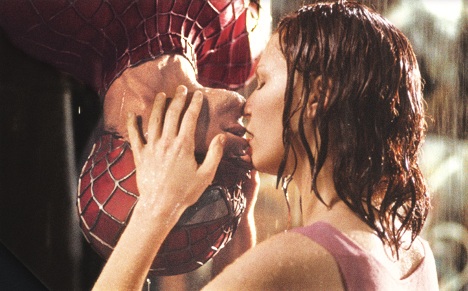
Webs, Wires, and Wonders: The Practical Magic of Sam Raimi’s Spider-Man
Written by on Sep 19, 2025 12:01 PM
In the early 2000s, the superhero genre was on shaky ground. After the neon-lit chaos of Batman & Robin and a string of underwhelming comic book adaptations, Hollywood seemed unsure whether capes and cowls could truly dominate the box office. That all changed in May 2002, when Sam Raimi’s Spider-Man swung into theatres, shattering creative and financial expectations. The film grossed over $114 million in its opening weekend, setting a new box office record and firmly planting the superhero genre into the mainstream [1].
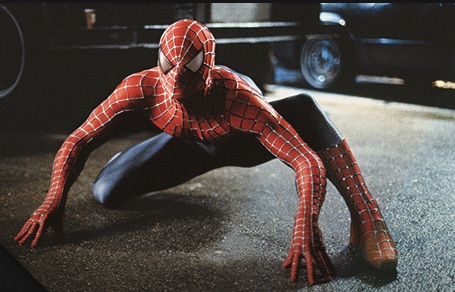
Raimi’s Spider-Man Trilogy did more than rake in ticket sales. It helped define what a superhero film could be, blending dazzling spectacle with heartfelt storytelling, grounding its action with a careful balance of practical and digital effects. Raimi, who made his name with cult horror classics like The Evil Dead, brought a unique sensibility to the superhero genre, combining campy, kinetic energy with genuine emotional stakes. His background in practical effects and low-budget ingenuity shaped the aesthetic of Spider-Man in ways that still influence the genre today.
With the trilogy swinging back into theatres nationwide starting September 26, we are diving into the practical magic found across Raimi’s Spider-Verse.
One of the most iconic demonstrations of Raimi’s dedication to practical effects occurs in the school cafeteria scene in Spider-Man (2002). In this brief but impressive moment, Peter Parker (Tobey Maguire) showcases his newly developed powers when Mary Jane (Kirsten Dunst) slips on a puddle of juice, sending her lunch tray flying. Peter instinctively catches her and every falling item in mid-air.
To achieve this, the effects team had someone standing above the camera out of frame dropping all the lunch items and “hoping it landed right.” Maguire performed the intricate feat himself, painstakingly perfecting the stunt over sixteen hours and one hundred and fifty-six takes. According to VFX supervisor John Dykstra, the team used sticky glue to help Maguire keep the tray stable in his hand while he tried to catch all the items in the correct position [2]. They could’ve stopped after a few takes and opted for a digital effect route, but Raimi insisted he wanted a uniquely tangible feel. In doing so, the scene became an instant classic and remains a testament to the art of practical filmmaking.
This philosophy extended beyond the cafeteria gag, finding its way into Peter’s early wall-crawling experiments. In order to create these gravity-defying stunts, the production used rotating sets and a rig known as a gimbal to move the entire room around Maguire. For more complex web-slinging sequences, Raimi and his visual team blended practical stunts with groundbreaking CGI – a typical sequence beginning with a stuntman launching off a rig and then seamlessly transitioning to our digital Spider-Man mid-swing. This hybrid approach allowed the films to focus on Raimi’s vision of exploring the human drama “of a young man being torn between two worlds rather than superhuman ass-kicking or franchise course-setting” [3]; something the newer films have replicated.
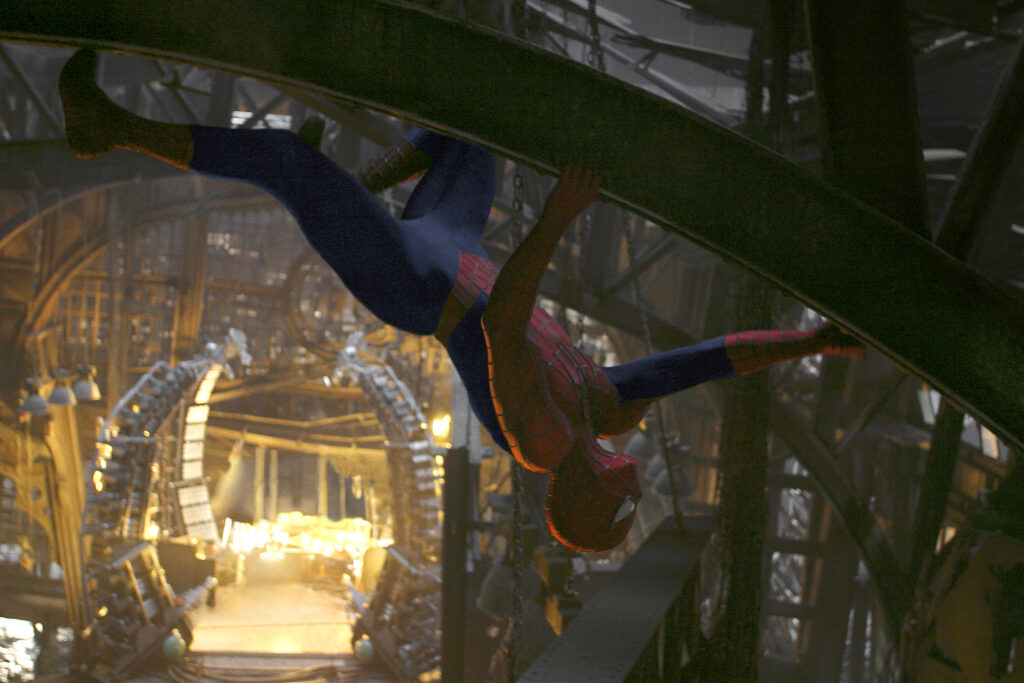
By the time Spider-Man 2 (2004) was in production, Raimi and his team were ready to push their hybrid approach even further, introducing the world to one of cinema’s most memorable villains: Dr. Otto Octavius, aka Doc Ock (Alfred Molina). Bringing this character to life required a blend of animatronics, puppetry, miniatures, and CGI. The production was adamant that Doc Ock’s tentacles should feel alive, not like digital appendages pasted onto an actor. To accomplish this, they built four fully functional, 12-foot-long mechanical arms, each weighing around 100 pounds. Much like William Dafoe’s Green Goblin armor (which was made from 580 precise pieces that allowed the actor to do all his own stunts), the ambitious costume gave Molina the freedom to play off his tentacles as if they were extensions of his body, with a dedicated team of puppeteers operating the arms on set [4].
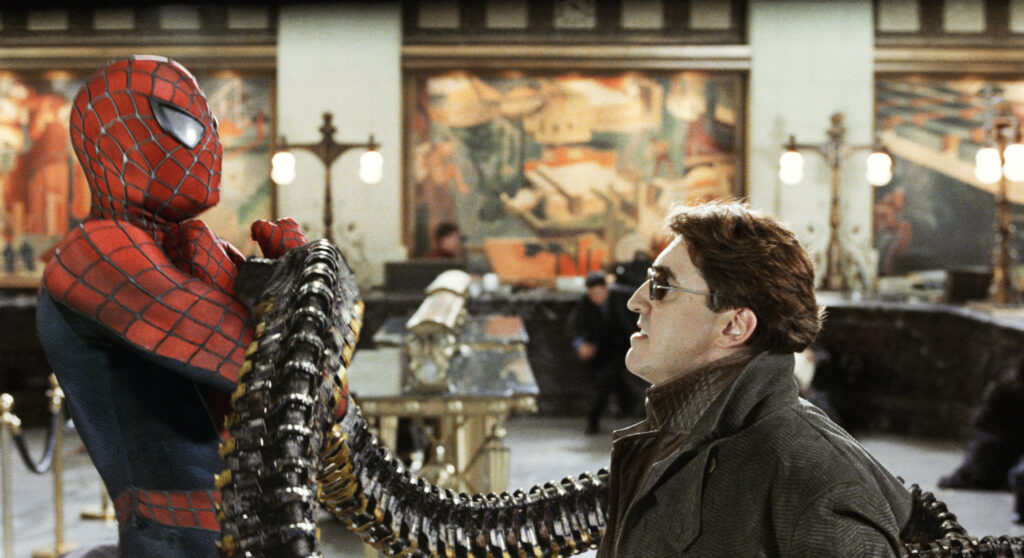
The organic and truly sentient feel of Doc Ock’s tentacles created one of the trilogy’s most iconic sequences. The hospital scene, where our villain massacres a room full of surgeons, was achieved mainly with practical effects. Raimi shot it like a horror film, implementing eerie lighting, screeching metal, and close-ups of terrified faces to build tension. Alfred Molina and the puppeteers carefully choreographed the tentacle attacks, with stunt performers being flung across the room by practical rigs. CGI was only used as a tool to erase puppeteers or extend the tentacle’s reach, amplifying the grounded and visceral feel.
In addition, miniatures also played a crucial role in creating a believable world in which these characters could exist. The production frequently used scaled-down cityscapes for wide shots of battles, and even constructed Doc Ock’s pier lair, a massive set measuring 60ft x 120ft x 40ft that took fifteen weeks to complete. This attention to detail created a towering villain that audiences could almost reach out and touch, and earned the VFX department an Oscar® for Best Achievement in Visual Effects.
Ensuring the kinetic expression of Spider-Man’s movement throughout the trilogy, The Spydercam was a rig that allowed for sweeping aerial shots that mimicked his point of view. It would drop fifty stories, track through the urban miniature jungles of New York City, and create a visceral sensation of vertigo and grace. These shots were motion-controlled and pre-planned digitally, blending both practical and digital effects to bring the world to life visually.
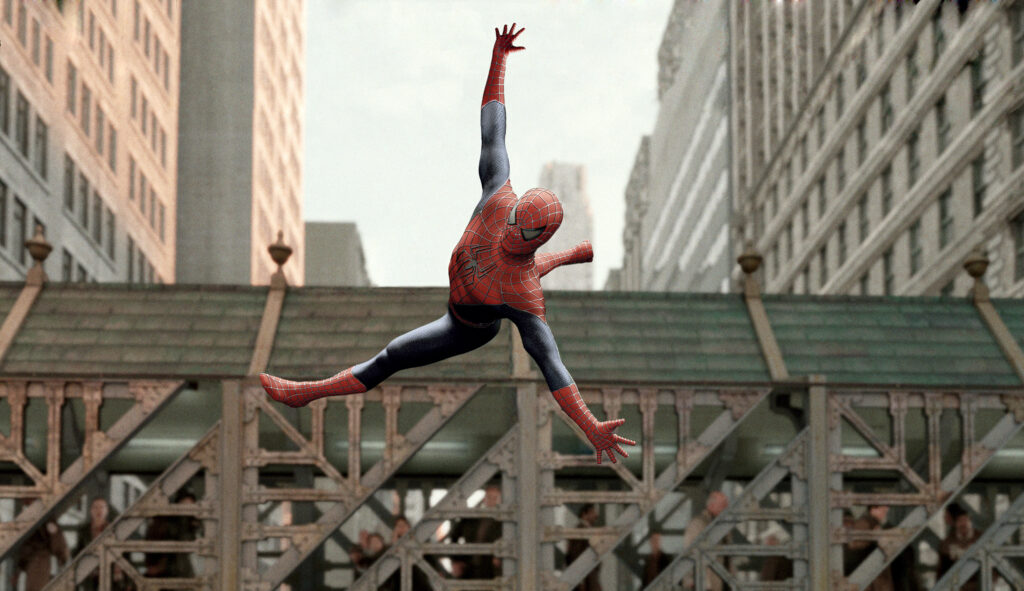
When Spider-Man 3 (2007) went into production, CGI matured enough to tackle more complex particle-based characters. The birth of Sandman (Thomas Haden Church) and Venom’s transformation were crowning achievements in not only VFX but also Raimi’s ability to blend the two art forms together.
In terms of Sandman, the advancements in CGI allowed the team to create a poetic sequence in which the sand grains gather, collapse, and turned into a human form. The usage of particle simulation, along with creating sand rigs and using motion capture to root the character’s digital body in real-world physics, required six months to animate. Every grain of sand had to interact believably with its environment, and in doing so, created the film’s most stunning and emotionally resonant scenes.
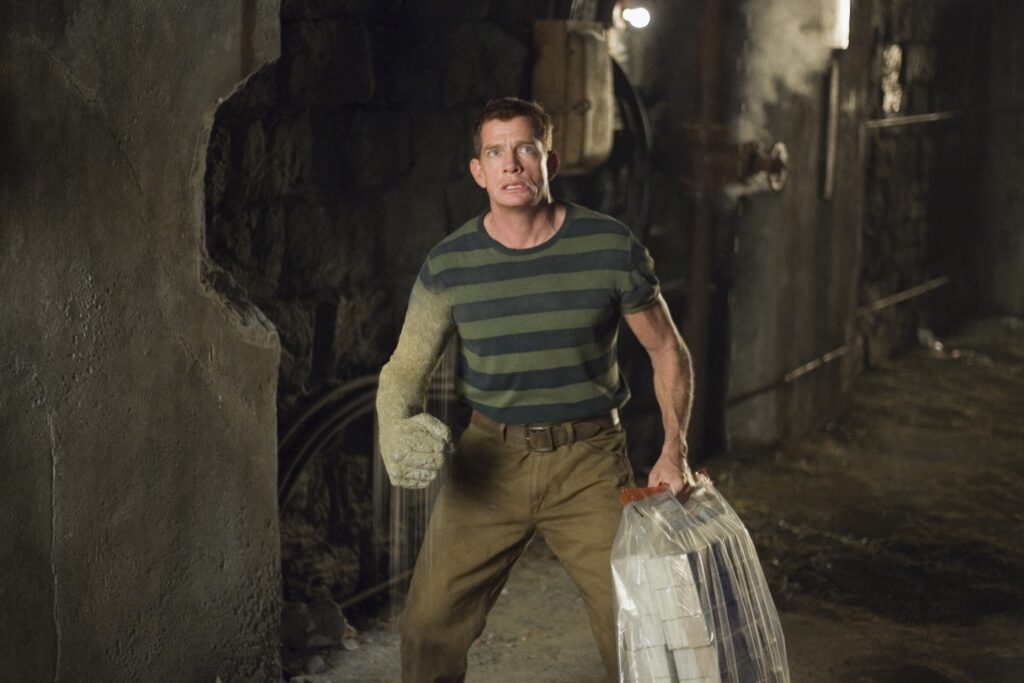
Raimi leaned more into practical effects for Venom’s transformation, creating monofilament wires for his face, special teeth appliances, and a suit that weighed over 100 pounds and took the actors an hour to put on. Eddie Brock’s grotesque fusion with the Venom symbiote echoed the integration of particle simulation VFX with practical prosthetics and dynamic camera moves, creating a hauntingly memorable sequence.
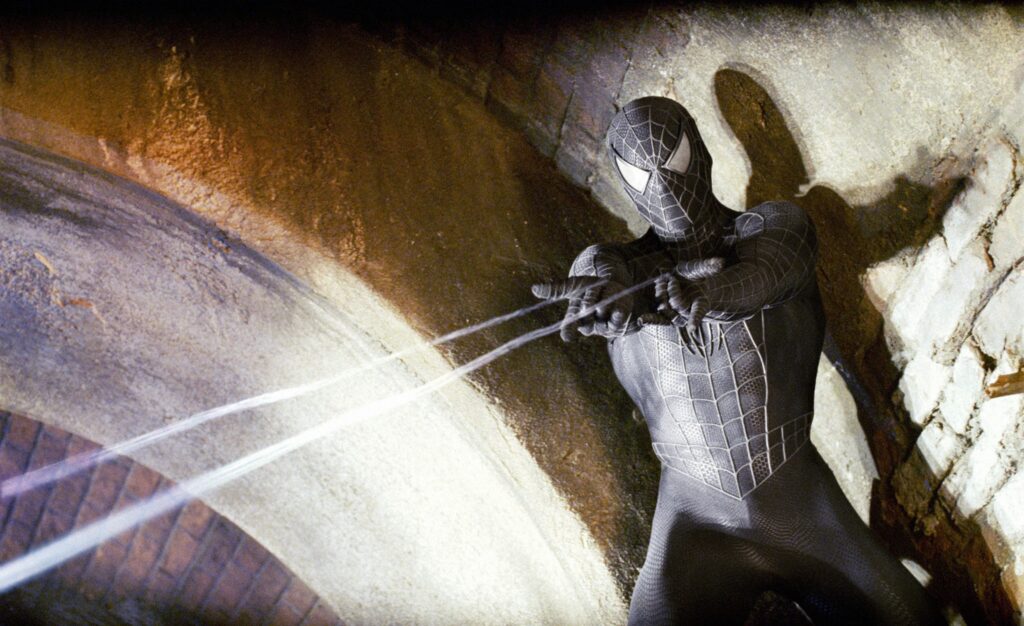
Spider-Man 3 became the most expensive film ever made back when it was released, costing a total of $350 million to finish [5]. This was largely due to the production never wanting to stray too far away from the magic of practical effects, using CGI as a tool to enhance character development and move the story forward.
Sam Raimi’s Spider-Man Trilogy remains a landmark of superhero cinema, not just for its storytelling but for its groundbreaking use of practical and VFX effects. From Tobey Maguire’s cafeteria stunt to Doc Ock’s puppeteer tentacles, the film thrived on tactile ingenuity. Even when CGI was used to its fullest extent, it was only to expand the scope of the Spidey-Verse or build emotion in a character’s story. According to James Hunt of the Cinematic Universe Podcast, Raimi’s Spider-Man films “created the rough shape of what comic-book movies are now,” setting up what became the golden age of Marvel.
Sign up for our newsletter to keep up to date with all our screenings.
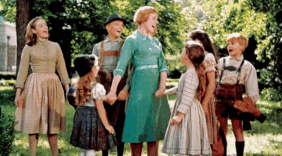


"*" indicates required fields